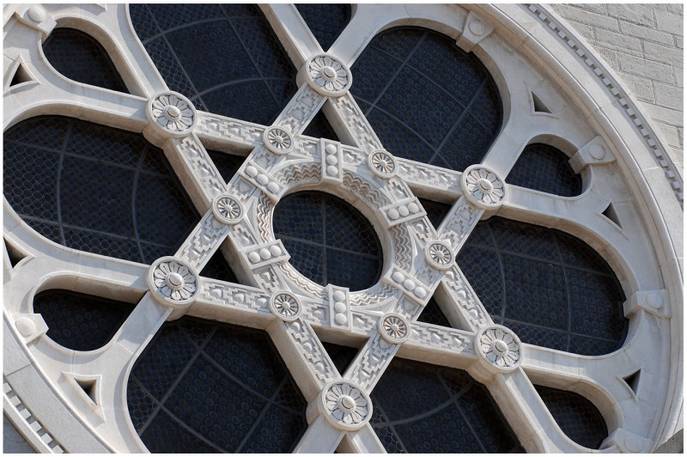


Jewish history is an important part of the Italy’s cultural legacy. Italy has only recently rediscovered its Jewish history and traditions; there are in fact very few who can claim to fully understand it.
We gathered for a special dinner which is part of a larger initiative to promote Jewish culture through Italian tourism. This new perspective on Italy is primarily geared toward the five million American citizens who visit Italy each year. It would also appeal to Italian citizens living in Italy or abroad who have yet to discover the ancient traditions of the Jewish community in Italy.
Last night the spotlight was on Trieste first and foremost. The city has had a Jewish presence since 1300 and its Jewish community consists of over 6,000 people. Modern technology is also used to enhance local itineraries and promote cultural awareness. An iPod, for example, becomes a way to make hidden places and little-known sites accessible to everyone who visits.
Discovering Jewish Trieste encompasses images, history, music, art, and food, while allowing tourists to connect with Jewish values and traditions, as well as a sense of Jewish community and identity. In Trieste, for example, tourists have the opportunity not only to visit synagogues, but also to experience other sites related to Jewish history.
In Trieste, for example, tourists have the opportunity not only to visit synagogues, but also to experience other sites related to Jewish history.
These are historically significant places for both Jews and Italians since they have given Italy an inestimable cultural legacy. Practically all Italian cities have a history of Jewish communities; some continue to thrive while others have changed or completely disappeared over time. Italy boasts fascinating tourist sites from north to south. Priceless treasures include inspiring synagogues, literary trails designed to trace the footsteps of Joyce, Freud, Svevo, and Levi, museums to explore, manuscripts to discover in various libraries, and family archives that are accessible to anyone who asks.
The dinner at Carnegie Hall was truly amazing. The menu, masterfully interpreted by Tony May of the famous San Domenico restaurant in New York, was prepared according to kosher laws under the supervision of Rabbi Umberto Piperno.
In his presentation Andrea Fiano, Milano Finanza correspondent for CFN-CNBC, discussed the Italian Jewish literary connection and referred to such luminaries as Italo Svevo, Ettore Schmidt, Umberto Saba, and Giorgio Voghera. He also discussed Italian Jewish culinary history which spans over 2,000 years and unifies strict dietetic rules with local products and regional influences.
“Jewish cooking tells the history of a people and its vanished worlds,” explains Claudia Roden. According to Roden, the history of Jewish cuisine is a true “food diary” reflecting the origins and migrations of the Jewish people.
In 1492, for example, 35,000 Jews were expelled from Sicily and were forced to abandon the land on which they had lived for centuries. They consequently emigrated and settled throughout Europe where ancient Jewish recipes were diffused, especially those based on eggplant, artichokes, raisins, pine nuts, and sweet and sour combinations.
Many regional dishes in the Italian culinary world descend directly from kosher cuisine. A few examples include duck prosciutto, pumpkin ravioli from Mantova, saffron rice (or Sabbath rice) from Milan, and sweet and sour fish with raisins from the Veneto.
Dinner concluded with a rare kosher grappa from Cividale. We were seated next to Dr. J. Joseph Zucher of Touro College who discussed how this wine demonstrates the presence of Jewish influence throughout Italy.

Alberto Jona Falco vetted interest in this initiative among different groups over the past week. “Here the great intellectual and cultural availability is astounding. It was perhaps easy to imagine that an American, above all a Jew, would be interested, but I never would have thought that Italians would be so interested.” Falco, a photographer and author, has perhaps the most important collection of photographs on Jewish Italy. He add, “According to the statistics of the Italian Ministry of Culture, 66 per cent of the world’s cultural heritage is in Italy. It is therefore easy to apply the same proportion to Jewish heritage. If we go on to consider the size of the country, it is relatively small compared with other countries. Everything is extraordinarily concentrated. I should also add that Italy is not considered anti-Semitic as are some other countries.
One thing that is fascinating about Jewish destinations is their proximity to other tourist sites. In Venice, for example, there is the extraordinary Basilica della Salute dating back to 1600 and it is located nearby beautiful Venetian synagogues. Walking through the narrow streets of Venice, one does not realize that the synagogues were purposely disguised. When the synagogues were built, they were hidden from view for security. But there is also an up-close, tangible reality to Jewish history. For example, the church in Venice’s St. Mark’s Square has Hebrew inscriptions on its external walls.
Today in Italy there is fluidity with Jewish communities; Jews do not occupy a separate reality. There have been, however, many instances in Italian history when this was not the case. At times Jews were persecuted, and at others they lived in royal courts with noblemen. It is one thing to refer to the Jewish experience in Florence under the rule of the Medicis, and quite another in Venice under the Serenissima. But what counts is that today there are footprints, with so much to see and touch.”
(Translated by Giulia Prestia) For more information visit this article's related links...
Source URL: http://test.casaitaliananyu.org/magazine/focus/art-culture/article/discovering-jewish-trieste-jewish-italy
Links
[1] http://test.casaitaliananyu.org/files/011196459120jpg
[2] http://www.turismo.fvg.it
[3] http://www.primolevicenter.org
[4] http://www.keyjewishtour.com